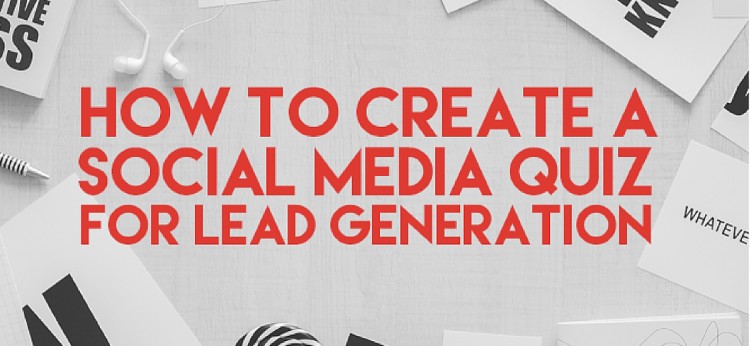6 Methods to Recycle Blog Posts to Expand Readership
https://t.co/oDDiPagBUV #blogging #contentmarketing
https://t.co/BuaSoH1BQS
Copied and reposted from Jeff Bullas Blog. Original posting link above.
6 Methods to Recycle Blog Posts to Grow Your Readership
Recycling is important, isn’t it? Though most of us aren’t going to chain ourselves to the base of an old oak tree in protest of its removal, generally speaking, people are happy to get involved in some sort of community-driven
recycling program.
Sure, we’re not willing to go out of our way to build a cooperative raft from leftover Pepsi bottles or anything quite so extreme, but if it’s simple and effective, we’ll knock it out of the park.
Yup, I went there.
So, if you’re tired of old, out-of-date blog posts collecting digital dust in the darkest corner of your blog, do something about it. In fact, when done properly, not only are you able to gain experience with different content types, but your blog will start to drum up a bit of new readership.
A few things to keep in mind before getting started
There’s this idea out there that if an
evergreen blog post (must be evergreen, by the way) performed well in the past, it will do so again when put to good use. Obviously, this is a safe bet.
That said, I tend to take things a step further – regardless of whether or not a post did well, it can be reprocessed for digital audiences. The big kicker? It’s got to be of
the highest quality. If it sounds like a press release, you’re not going about things in the right way.
Anything else simply won’t suffice.
Seriously, why wouldn’t you give things a second shot? Essentially, by so doing, you’re killing two birds with one stone – a post gets a second shot at blog promotion and you’re doing all you can to grow your current audience.
What more can you really ask for?
6 Effective Ways to Recycle Long-Forgotten Blog Material
Alas, it’s time for the good stuff – the actual things you can do as a
content marketer to milk each of your blog posts for the marketing value that they should innately provide.
Admittedly, with this kind of project, there’s bound to be a bit of trial and error involved, so don’t get frustrated should a specific method not produce mind-boggling results.
Just because one of the following tactics fails to work, doesn’t mean the whole lot is bad. Experiment and, in no time at all, you’ll have a good idea as to what works for your blog’s niche.
1. Original social images
You’ve heard it before and, more than likely, you’ll hear it a few more times before your career as a content marketer kicks the proverbial bucket – social images lead to
substantially more user engagement. Doesn’t matter if it’s Facebook, LinkedIn or Pinterest, if you include an intriguing image with a post, more clicks are bound to take place.
Take Twitter, for example. If you took the time to conduct a survey for an older blogging project, create a simple graphic outlining the study’s more interesting findings, add the piece’s link at the end of some well-crafted social copy and send it out for your followers to enjoy.
Get creative with this and include seasonal events, societal happenings or influential quotes to create even more awesome social images – all referencing your blog’s original piece as the authoritative source, of course.
Needless to say, though each social platform brings with it a unique set of norms and mores, all across the board, this is an awesome way to recycle past posts.
2. Video tutorials on YouTube
So popular is the use of audiovisual content that, this year, online video now accounts for 50 percent of all mobile web traffic. Seeing as how video is as big as it’s ever been, you need to make it an integral part of your repurposing efforts.
Not only will they perform better on YouTube or Vimeo, but you won’t chew up so much time producing the video copy.
3. Clickable LinkedIn articles
If you’re not regularly pushing content through your personal LinkedIn page, you might need to have your head checked. No joke – LinkedIn, even from an SEO perspective, is about
as good as a publishing platform gets with both impressive domain and page authority scores.
By way of repurposing older blog pieces though LinkedIn, not only can you attract new niche readers, but you’ll do wonders for your professional reputation.
You don’t need me to tell you how important it is to be widely considered one of those “Thought Leaders” in today’s day and age. LinkedIn is great for doing just that.
Even better, this doesn’t have to be a lengthy activity.
Simply start with an evergreen post you’d run months earlier and summarize its content in a LinkedIn post. After you’ve highlighted some of the original post’s finer points and added a few images and screenshots to spice things up, link back to the article on your website.
4. SlideShare presentations
PowerPoint? Too old. Prezi? Too complex. SlideShare?
Just right.
No, this isn’t a second installment of the timeless classic, “Goldilocks and the Three Bears.” Moreover, it’s yet another killer way to transform old blog posts into exciting material for mass consumption and widespread appeal.
With upwards of 60 million active users and 17 percent of B2B marketers using the image-sharing outlet for marketing purposes, you should too.
Don’t have the time to create a full-blown presentation? No worries – simply find an infographic you’d created in the past to accompany a post’s written text and upload it to SlideShare. The program automatically detects that it’s an infographic and files it accordingly.
5. Informative answers via Q&A sites
Q&A sites are awesome. If you haven’t given them a whirl, repent and get to work.
What was once a social sliver dominated by Yahoo! Answers is now currently bigger than it’s ever been before, thanks to the likes of Quora.
To
work your blogging magic on Quora or a similar site, create an account and start following topics of which you’re fairly knowledgeable – in other words, the very thing your blog is dedicated to covering.
Do a bit of browsing and once you’ve found a user question that can be accurately answered by one of your older posts, hop on and provide a well-constructed response.
Only, instead of using purely the information you’ve managed to store in your brain’s hippocampus, cite the aforementioned blog post as a source with a well-placed backlink.
6. Webinars, podcasts and Google+ Hangouts
Relax, Google+ isn’t as dead as some so-called “marketing experts” claim it is. Honestly, the best part of the social channel comes from the Hangouts feature.
Says Kristel Cuenta of Search Engine Journal, “Google+ hangouts present an incredible follower-building opportunity for marketers and professionals because it lets you show your expertise through live discussion/Q&A.”
Furthermore, webinars and
podcasts – built directly off of your past blogging brilliance – are two additional content forms that users love to engage with.
Admittedly, they’re harder to produce, but take the time and effort to create something worthwhile, and you’ll have already distanced your blog from lazier competitors.
Sooner rather than later, make it happen
As the above subheading indicates, the best time to start with the repurposing of your blog’s content was yesterday. Don’t delay. Blogging is an important part of the overall content marketing blueprint.
There’s some urgency with this stuff.
Also, one last tidbit before signing off—feel free to use some creative crossover to really take your repurposing game to the next level. If you see it best to create a SlideShare presentation and then subsequently run it on LinkedIn or Twitter, that’s perfectly fine.
Listen, don’t get me wrong—I’m not saying that the repurposing of your blog content is as important as making certain that lions like the late Cecil can roam the Sub-Saharan desert without stepping on trash.
Why? Well, it just isn’t. In fact, it pales in comparison. Yet, as far as digital marketing is concerned, using old blog content to further build a digital audience is nothing short of essential
So, make it happen.
Questions? Comments? Concerns? Whatever the case, hop on down to the comments section below and share your thoughts and feelings. Rest assured, once an engagement has taken place, in no time at all, I’ll make certain to keep the conversation going as best I know how.
Guest Author: Lucas Miller is the Founder of Echelon Copy. When not writing, editing or running, he’s working tirelessly to perfect what he claims is the “World’s Greatest Pompadour.” Additionally, for what it’s worth, his editorial works have been featured on Social Media Today, Business2Community, Ragan’s PR Daily, Spin Sucks and many other top-tier PR publications.


















